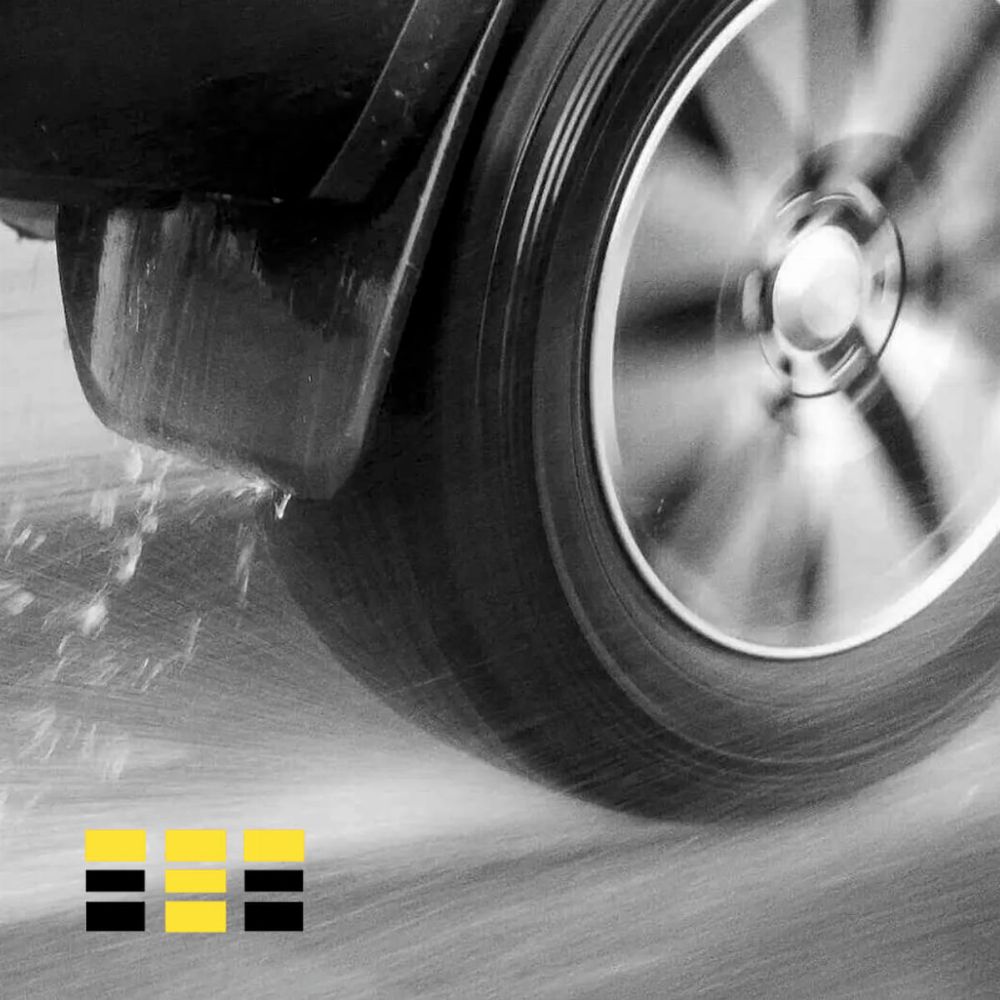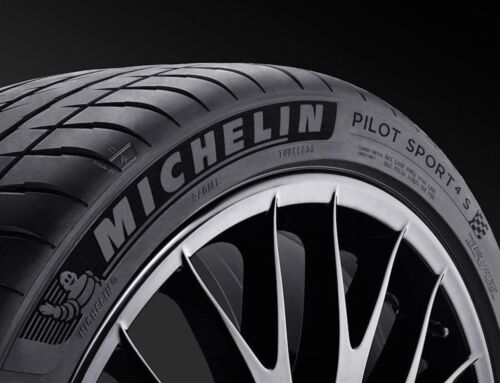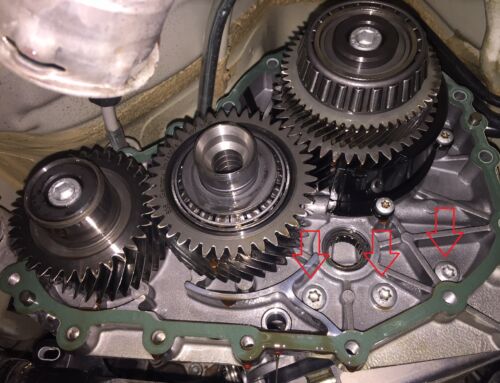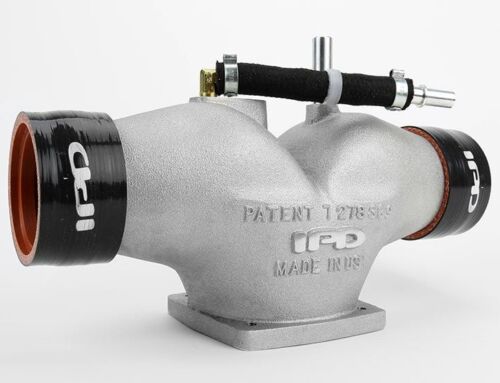Tunerworks ServiceUnderstanding Hydroplaning |
| |
Once the rainy season hits after summer, sudden downpours seem to happen at the least opportune times. Due to this, hydroplaning is a year-round concern, and something we should always be prepared to deal with. |

No matter what season it is or what the weather forecast says, being prepared to handle poor road conditions will help you stay safe. While the chance of a blizzard may be low this time of year, sudden downpours seem to happen when we least expect them. Due to this, hydroplaning is a year-round concern, and something we should always be prepared to deal with.
In this article, we’ll talk about what hydroplaning is, why it happens, how you may be able to avoid it, and how to react if it happens to you. Hydroplaning is a serious concern, and causes hundreds of accidents every year. The good news is that with a little skill, the right knowledge, and proper equipment, you can be set up to handle wet conditions like a pro.
What is Hydroplaning?
Also known as “aquaplaning”, hydroplaning refers to a loss of control due to sliding on wet surfaces. It means that your tires have lost their grip on the road, and are instead floating on top of a layer of water. The effect is similar to what happens when you skip a rock on a pond – rather than sinking in, it bounces on the surface. When your vehicle’s tires lose their grip with the road, it becomes difficult to control your vehicle, possibly resulting in a spin out or your car veering in undesired directions.
For a vehicle to hydroplane, the standing water does not necessarily need to be deep. Indeed, hydroplaning can occur even when there is very little water present at all. Any time you encounter water on the road, you should be aware of the possibility of reduced traction.
Why Does Hydroplaning Occur?
Numerous factors contribute to whether or not your vehicle will hydroplane, but the only mandatory ingredients are water and moving tires. Things like water depth, pavement texture, road profile, driving speed, tire inflation, tire condition, and vehicle specifics all contribute to how your vehicle will behave in wet conditions.
Tires are designed to clear out water between their surface and the road – that’s what treads and siping are for. There is a staggering amount of technology behind tire tread engineering, all with the goal of keeping you safe. However, if the amount of water under the tire exceeds the ability for your tire to dissipate it, your vehicle will begin to skid.
As your tires wear down, their ability to disperse water decreases. That means that the more worn your tires become, the more likely it will be for your vehicle to hydroplane in a given scenario. Make sure you keep your tires balanced, aligned, and rotated – check out our tire services right here.
How to Prevent Hydroplaning
As there are so many factors that affect whether or not your vehicle will hydroplane, there are a number of strategies that will help you lower the chances of it happening to you. If the road in front of you looks wet, try these tips to help keep you safe:
Avoid Standing Water: We know that there are so many things to focus on when driving – lane position, the behaviour of other motorists, kids misbehaving in the backseat – but when you notice that the roads are wet, be on the lookout for standing water.
Hydroplaning is most likely to occur on a highway, because the higher speeds increase your risk of hydroplaning (more on that to follow). If you’re in a two-lane highway, try to be aware of which lanes have more standing water and which ones look safer. If one lane has a giant lake-like puddle, it would be in your best interest to safely move into the drier lane.
Reduce Speed: Basic physics tells us that the faster you go, the higher your risk of hydroplaning; like how skipping a rock over a lake works better the harder its thrown. When the roads are wet, you will reduce your risk of hydroplaning by lowering your speed. Remember that the posted speed limits are set with ideal road conditions in mind – there is no harm in driving moderately under the limit if the road conditions are poor. Your speed should suit the prevailing conditions and your comfort level.
No Cruise Control: Cruise control is an absolute Godsend on long road trips and straight, dry highways – it helps us maintain a constant rate of speed and saves our calf muscles from unnecessary stress. That said, there is a time and place for everything, and a wet road is no place for cruise control. On a wet road, you want as much feedback from your vehicle as possible so you can react to a loss of traction.
There are three reasons why you should avoid cruise control when hydroplaning is a risk:
1. Cruise control interferes with your ability to feel your vehicle’s behaviour, limiting how quickly you can notice and react to a loss of control.
2. Having to disengage cruise control is an additional action required in your reaction to hydroplaning.
3. Your cruise control system may confuse skidding tires with a reduction in speed and send more power to your wheels.
When the roads are wet, you’re better off foregoing cruise control and driving the old fashioned way.
Tire Condition
There’s a reason that the phrase, “where the rubber meets the road” is used to express the moment of truth or the most important point of something. If your tires are bad or worn out, it doesn’t matter how powerful your engine is, how skilled a driver you are, or how wet the roads are. High quality tires deliver better and longer lasting performance, meaning that your vehicle will maintain traction with the road when the conditions are poor.
In addition to investing in quality tires that suit your vehicle and driving style, keeping them properly inflated and regularly rotated and balanced will ensure you get every ounce of performance that you are entitled to. Tire balancing and rotation should happen at every other oil service.
Recognizing Hydroplaning
Some people have never experienced hydroplaning, or if they have, they didn’t recognize what was happening. Most of the time, hydroplaning results in a split-second loss of control, so it is understandable that people who drive infrequently may have never noticed it. Here are the signs that you are experiencing hydroplaning:
• Your car will feel loose, and you may hear or feel odd vibrations.
• You may notice the rear or front of the car slowly swinging out from the main direction of travel – this will be especially noticeable if you are in a bend.
• If all 4 wheels hydroplane, your vehicle may continue in a straight line with no swinging at all, but your vehicle could drift in an unanticipated fashion.
These are the most common symptoms of hydroplaning, but it’s important to remember that every vehicle behaves differently, and no two scenarios are identical. The most important thing is to pay attention while driving and respond to what your vehicle is doing.
Handle Hydroplaning Like a Pro
The most important step in dealing with a hydroplaning vehicle is to stay calm. The prospect of losing control of your vehicle on the highway is scary, but you will be better off if you can stay cool under this pressure.
Do not hit the brakes
Any time things aren’t going according to plan while driving, the instinct is to hit the brakes – because usually, brakes mean slow and slow means safe. The problem is that by definition, hydroplaning has eliminated the friction between your tires and the road, meaning that your brakes will not do what you expect them to. Instead, hitting the brakes while hydroplaning could cause even worse loss of control.
Take your foot off of both pedals
Ok, so we established that you don’t want to hit the brakes, but you don’t want to stomp on the gas either. Accelerating could worsen the skid, but the real danger is what would happen if your tires suddenly regain contact while you are on the gas.
By hitting the gas pedal while hydroplaning, your tires could spin faster than your vehicle is moving. If they suddenly reconnect with the road, you vehicle would shoot off in whatever direction it happened to be pointing. If you feel your tires disengage in a skid, smoothly remove your foot from whichever pedal it was on and focus on the steering wheel.
Embrace the skid
Recognize which direction your vehicle is skidding and use small, smooth adjustments of the steering wheel to aim your vehicle towards where you want to go. It’s important to avoid aggressive steering, as you are likely to overcorrect or cause the vehicle to behave erratically if it suddenly regains contact. You want to make sure that your wheels are positioned in such a way that whenever your vehicle regains grip, it will be steered in a safe direction. Multiple small adjustments to the wheel are preferable to dramatic corrections.
Wait for reconnection
The goal of easing off the accelerator is to gradually slow the vehicle down so it regains traction with the road. All your actions up to this point have been about making sure your vehicle is positioned properly for when it regains grip. When handled correctly, hydroplaning doesn’t last long and will be over before you know it. If you’ve done everything right, your vehicle will regain purchase on the pavement and you can continue on your way.
Any loss of control, no matter how minor or brief, can have a dramatic effect on your state of mind. Once you’ve regained traction and everything is ok, it might be a good idea to pull over (when it’s safe to do so) and give yourself a breather. Everyone responds to these types of situations differently, but a spike in adrenaline or increased heart rate are not uncommon reactions to such serious scenarios. Taking a minute to calm your nerves and recover your head at the side of the road might be a great idea.
While your actions have a huge impact on how your vehicle reacts to hydroplaning, your tires matter too. Like we said earlier, it doesn’t matter how good your driving skills are if your vehicle is equipped with sub-par rubber. Tunerworks has the expertise and products that you need to fit your vehicle with quality tires, and we can take care of the rotation and balancing too. To stay safe, it’s important that you stay on top of your equipment, and Tunerworks can help you with that.




